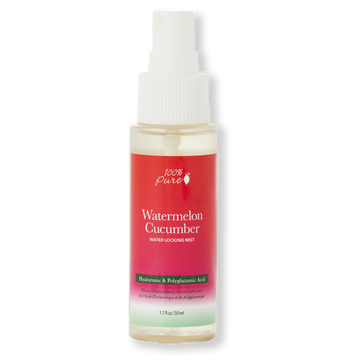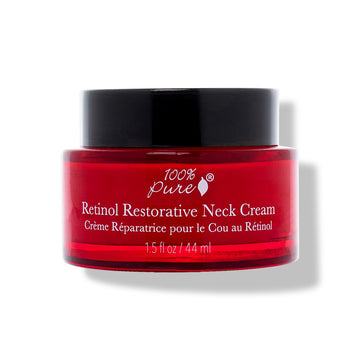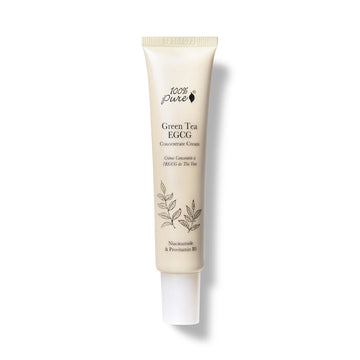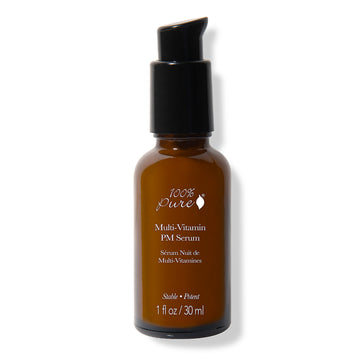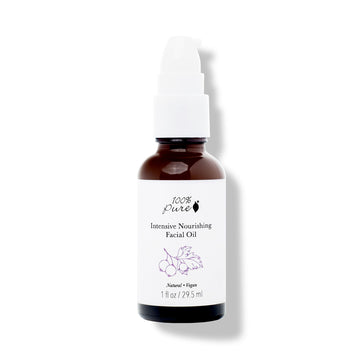Unlock the Ancient Secrets of Facial Sculpting and Radiant Skin
Posted on August 21, 2024 Written by: 100% PURE®
We love the whole holistic enchilada to beauty for not only practicing inside-out wellness but also addressing the root causes of skin issues rather than just treating symptoms. It’s why, say if you had acne, we’d recommend skin products for acneic skin and a face roller to reduce inflammation. And, it’s why if you want radiant skin, we’d advise products to enhance skin brightness and a gua sha to give your complexion an overall glow!
Sure, a balanced diet, exercise, and other healthy habits would be part of our whole-listic skin goal. But just as the right products will help treat the symptoms of skin concerns, facial tools – like a gua sha - can help get to the root of the causes. For example, got dull, damaged skin? Gua sha can boost circulation to help repair skin cells and improve blood flow to give the skin a natural, radiant glow.
If you’re on a quest for youthful, glowing skin, we can safely say gua sha has been on a centuries-old quest from its multi-faceted uses in traditional medicine to modern beauty routines – and now yours! Let’s walk you through the various benefits of gua sha and other facial tools, the right techniques, and how to get the best results. Let’s go on our own skin quest with gua sha as a natural, holistic approach to skincare and destination ‘radiant complexion’!
Understanding Gua Sha
When we think of the word massage, many of us may think about a relaxing body therapy session that helps to relieve tension and stress. It’s so relaxing you can fall asleep! Although this is also true for a facial massage, there’s even more added benefit than you might think. That’s adding gua sha! So, you’d think it would be a similar Zen-like experience in China, right? That’s a hard ‘no’!
While Western consumers have only recently discovered this ancient beauty secret, the practice of gua sha originated centuries ago in China. The first written record of gua sha is from the Ming Dynasty over 700 years ago. Gua sha is traditionally an intense body massage, where massagers use ancient scraping motions to treat ailing skin and muscle conditions.
During this time, people used their hands or stones (ouch!) to rub various parts of the body to relieve pain or symptoms of sickness. As such, the practice of gua sha was often used as a folk remedy to "scrape away illness". The practice is also thought to be related to other traditional Chinese practices, such as acupuncture and massage.
Whereas traditional gua sha uses flat, stone-made tools for a fast, aggressive scraping motion that would require some pressure, depending on the severity of muscle tension, there’s better news for facial gua sha. This practice has evolved into a gentler ‘hands-on’ approach so it’s much more comfortable and pleasurable on the face, using a gentle gliding in lieu of “scraping” or “coining”. This practice is meant to de-puff the face plus a host of beauty benefits.
Science and benefits behind gua sha:
Contours face
A gua sha facial can temporarily slim your face by reducing puffiness, especially in the eye and cheek area. This can result in a more contoured shape around the cheeks, jawline, and other areas prone to puffiness. We love some natural face sculpting!
Promotes lymphatic drainage:
The lymph nodes filter and process fluid for removal, so gua sha can help direct excess fluid away from the eyes and nose and towards the hairline and neck.
Enhances circulation
A gua sha facial is essentially a face massage. Massages stimulate blood circulation, bringing oxygen and nutrients to the skin. This leads to a brighter, healthier complexion.
Relieves muscles tension
Similar to scar tissue, gua sha facial techniques help break up fascia: connective tissue that can sometimes interfere with circulation. Breaking up that fascia more regularly leads to better circulation week to week. Loosening up your muscles and relaxing is never a bad thing, either!
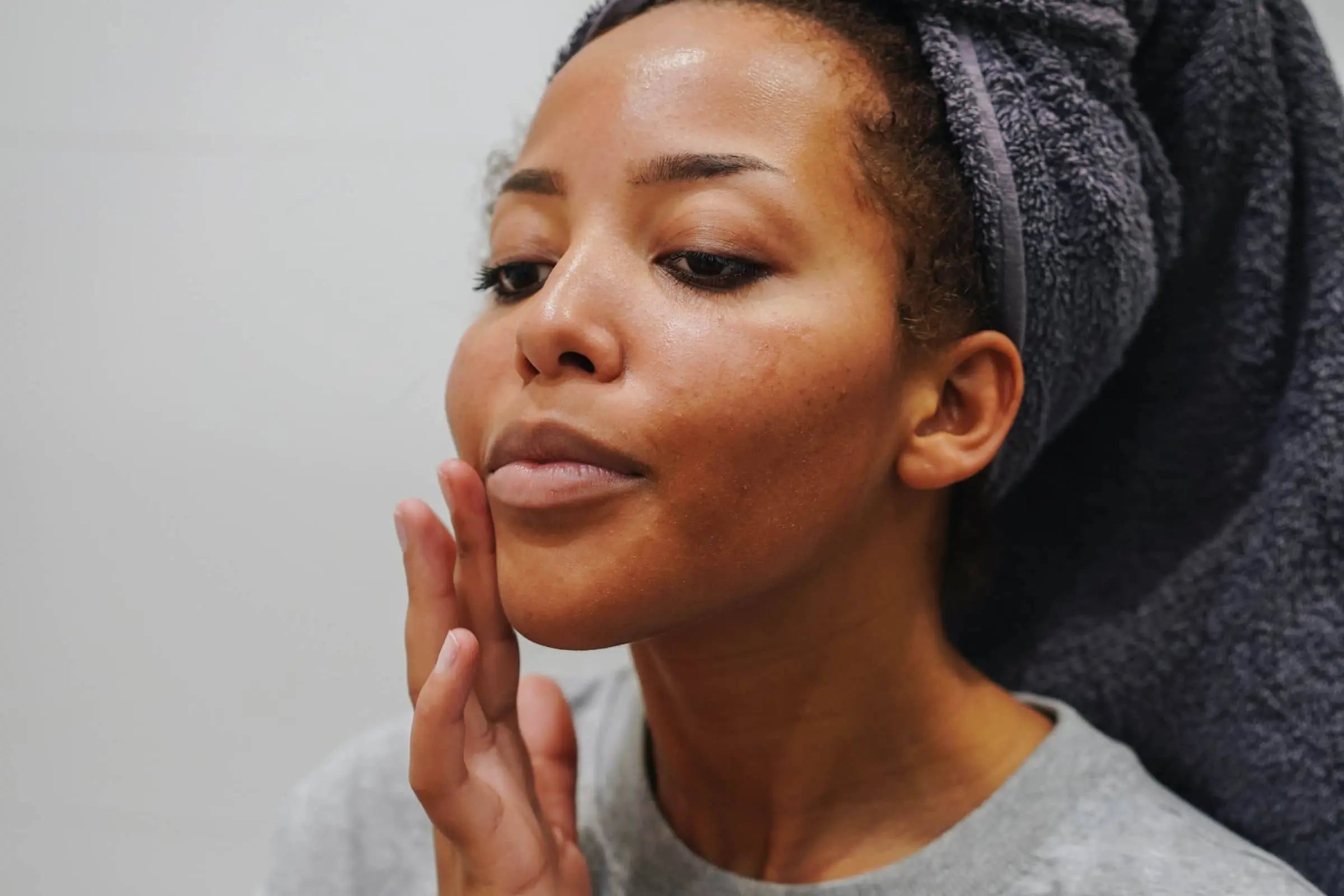
Gua Sha vs. Other Facial Massage Techniques
If we could dive into the Fountain of Youth, we’d likely find a plethora of gua sha tools and jade face rollers floating around. Whether they’re made of some trending stone or crystal, these facial tools are the product du jour of firmer, brighter, more youthful skin.
Whether you’re struggling with dull skin, firmness, elasticity, puffiness, or just feel like a stress ball, one of these fabulous facial tools will help address your concerns. But which one should you use and what technique? Or should you just opt for a good old manual facial massage with no tool-assisted techniques? Let’s compare gua sha and jade rolling and the benefits of each method!
Comparing gua sha and jade rolling:
Gua sha:
What it is: A gua sha stone—also sometimes referred to as a jade scraper—is a little flat pebble of jade or other vanity-worthy gemstones that can chisel out cheekbones you didn’t even know you had. It can come in a variety of shapes: heart, wave, wand, and teardrop.
Similarities: Gua sha and face rolling have similar benefits. Gua sha gives you a quick boost of benefits like brightening your complexion, depuffing your face, tightening and toning skin, stimulating lymphatic drainage, and increasing circulation - all to boost your natural glow to face the day ahead!
Differences: Gua Sha tools come in different shapes, and vary depending on different needs and purposes. It’s a more precise technique than face rolling that can target specific areas. In contrast to a rotating stone featured on a jade roller, a gua sha has angular sides to really target relief to various acupressure points
.Face rolling:
What it is: Face rollers are rolling devices made of jade, rose quartz, or other trendy crystals - or they could be made of stainless steel - that’s been smoothed and attached to a convenient handle. The handle has a rotating wheel. Some rollers have two sides, with a larger ball for the cheeks, jaw, and forehead, and a smaller ball for the eye area.
Similarities: Face rolling and gua sha have similar benefits. Face rolling gives you a quick boost of benefits like depuffing your face, helping with aging woes, stimulating lymphatic drainage, and increasing circulation - all to boost the natural glow of your skin!
Differences: When it comes to tool-assisted techniques, face rolling differs from gua sha for its simplicity of use and the technique itself of rolling the device across your face. The technique is a bit simpler than gua sha, but still provides similar benefits. Since face rolling doesn’t require tons of time or expertise, it’s the perfect holistic facial tool if you’re tight on time craving a quick morning pick-me-up, or have lots to do, or have too much on your hands.
Essential Gua Sha Tools
Whether you’re looking to chisel out cheekbones you didn’t even know existed, de-puff hangover eye bags, and crank up the dial on skin brightness, there’s the power of a simple flat stone to help scrap your skin woes away.
Whether you’re a newbie at gua sha or have a few sculpts under your hair band or guru, it’s important to know what the different types of these facial tools are and the right shape for your face for radiant, more youthful skin. Here are the most common shapes and benefits of gua sha:
Heart- or V-shaped tool:
As its name suggests, this tool resembles a heart shape and is one of the most popular and commonly used gua sha tools. Good for beginners, this shape glides over the face and neck. It can be used for increasing lymphatic drainage and reducing facial puffiness and inflammation. It’s easy to hold because of its small size and is perfect for contouring different areas of the face, including the jawline, nose bridge, chin, and under-eye area. If you have larger areas to gua sha, this shape might not suit your needs well.
Wave-shaped tool:
If you want to maximize the use of one tool shape then this wave-shaped tool is perfect for you. This shape is one of the most versatile of all the shapes and has the greatest maneuverability. The curved area on the edge of the tool is ideal to use in areas of the face that may be more difficult to maneuver, like the brow bone and underneath the eyes.
The wave shape is also ideal for massaging the jawline to relieve tension brought about by chewing, bite problems, and physical and emotional stress, and helps us to avoid having jaw clenching or temporomandibular jaw (TMJ). The long edge of the tool is great for massaging along the neck and working across larger areas like the arms and legs, making it ideal for body gua sha, too.
Wand-shaped tool:
This long, slender tool has 2 pointy ends that are best to use for targeted areas, like acupressure, where you want to apply pressure on the jawline and temples and to relieve tension in the body, especially in the hands, feet, laterals, back, neck, and shoulders. This wand-shaped gua sha tool provides targeted relief to various acupressure points throughout the nasal cavity -- perfect for seasonal allergy or sinus congestion relief! The challenge with this shape is the limited maneuverability around the face and smaller areas of the body.
Teardrop-shaped tool:
This tool is very suitable if you are aiming to relieve tension throughout the body. You may find it useful in cases where you need to apply pressure on targeted areas because of the long, smooth edges on both sides. Lighter pressure also encourages more movement of lymph, therefore improving lymphatic drainage.
For the face, the teardrop shape is also very ideal to use on larger surface areas, especially the forehead to help eliminate fine lines, and it’s also ideal along the neck, shoulders, legs, and arms to fight cellulite, promote blood circulation, and boost lymphatic drainage. Like some of the other tool shapes, the teardrop-shaped tool may offer less maneuverability in the face area like the eyebrow bone, nose, and under-eye area.
Preparing for Your Gua Sha Ritual
The idea that a gua sha facial isn’t totally new, but the idea of doing it gentler with a luxurious crystal has some beautifying superpowers. The concept is to assist in depuffing, drainage, collagen stimulation, and relieving facial muscle tension. But you’re not going to be unleashing any type of beauty benefits if you don’t know how to gua sha correctly.
The good news is you can easily add gua sha into your regular skincare routine, and we’re going to show you how in a few easy steps. It’s important to first prepare your skin for your gua sha ritual.
#1: Create a relaxing environment
Creating a serene environment is the first step to fully enjoy your gua sha experience. You can set the mood by lighting some candles of your favorite scent and playing classical or calming music. The tranquility will not only enhance your relaxation but also make the experience more enjoyable.
#2: Cleanse and tone
It’s important to cleanse your skin so you’re starting with a fresh canvas of the art of gua sha. Cleansing helps wash off sweat and makeup from the day, which can harbor bacteria – which will only be spread when you do your gua sha routine! Toning helps make sure all your makeup comes off and primes your skin for a properly pH-balanced routine.
#3: Select your tool
Most gua sha tools will be in the shape of a half-moon. This allows the tool to hug and contour the curves of your face. Avoid using tools with cracks or sharp edges, as these can catch on your skin and cause damaging microtears.
You should also choose gua sha facial tools made of authentic jade or rose quartz to avoid potential skin irritation from synthetic dyes.
#4: Apply a serum or oil
After cleansing and toning, apply a hydrating serum or facial oil to reduce the friction between the skin and your gua sha facial tool. These formulas will create a smooth, slippery surface for your tool to glide over. This eliminates the chances of yanking or tugging, which can lead to fine lines and wrinkles.
Now that you’ve prepared for your gua sha facial and set the mood, it’s time for your relaxing gua sha ritual for radiant, more youthful skin!
Step-by-Step Gua Sha Techniques
Are you ready to gua gha? Don’t be intimidated - it's pretty simple. With a little time and practice, you can unlock the full potential of gua sha in your skincare routine with our step-by-step techniques. Whether you're new to this ancient beauty tool or looking to refine your technique, understanding the proper use of gua sha is key to achieving the best results. From choosing the right gua sha shape to mastering the strokes, every detail matters in this skin-transformative practice.
When using your gua sha, remember that gentle, upward strokes are key. The goal is to promote lymphatic drainage and increase circulation, not to apply excessive pressure. Now, grab your heart-shaped new skin bestie!
#1: Hold the Tool Correctly: Your grip on the gua sha tool should be firm yet gentle to maintain control over the pressure and angle during the scraping massage.
#2: Use Gentle Strokes: Apply the tool in upward and outward strokes to lift the skin, using the heart-shaped edge for areas like the jawline and under the eyes. The upward and outward motion encourages lymphatic drainage and enhances skin scraping benefits. You can repeat these motions up to 5 times for best results. The flat side is excellent for broader areas like the cheeks and forehead.
#3: Follow the Facial Contours: Adapt the strokes to follow the natural lines of your face and neck. This customized approach helps target specific areas like the double chin or areas requiring more focused muscle scraping.
Don’t forget your cheeks and mouth area. You can use your free hand to provide some light resistance as you glide the tool across your skin. This will help define those cheekbones that you think you might not have, and reduce puffiness.
Remember to use a light to medium pressure. If you notice any pain or severe skin redness, you might be massaging too harshly!
#4: Include the Neck and Shoulders: Extend the gua sha routine beyond your face. Use the tool on your neck and shoulders to relieve tension, aligning with holistic gua sha benefits.
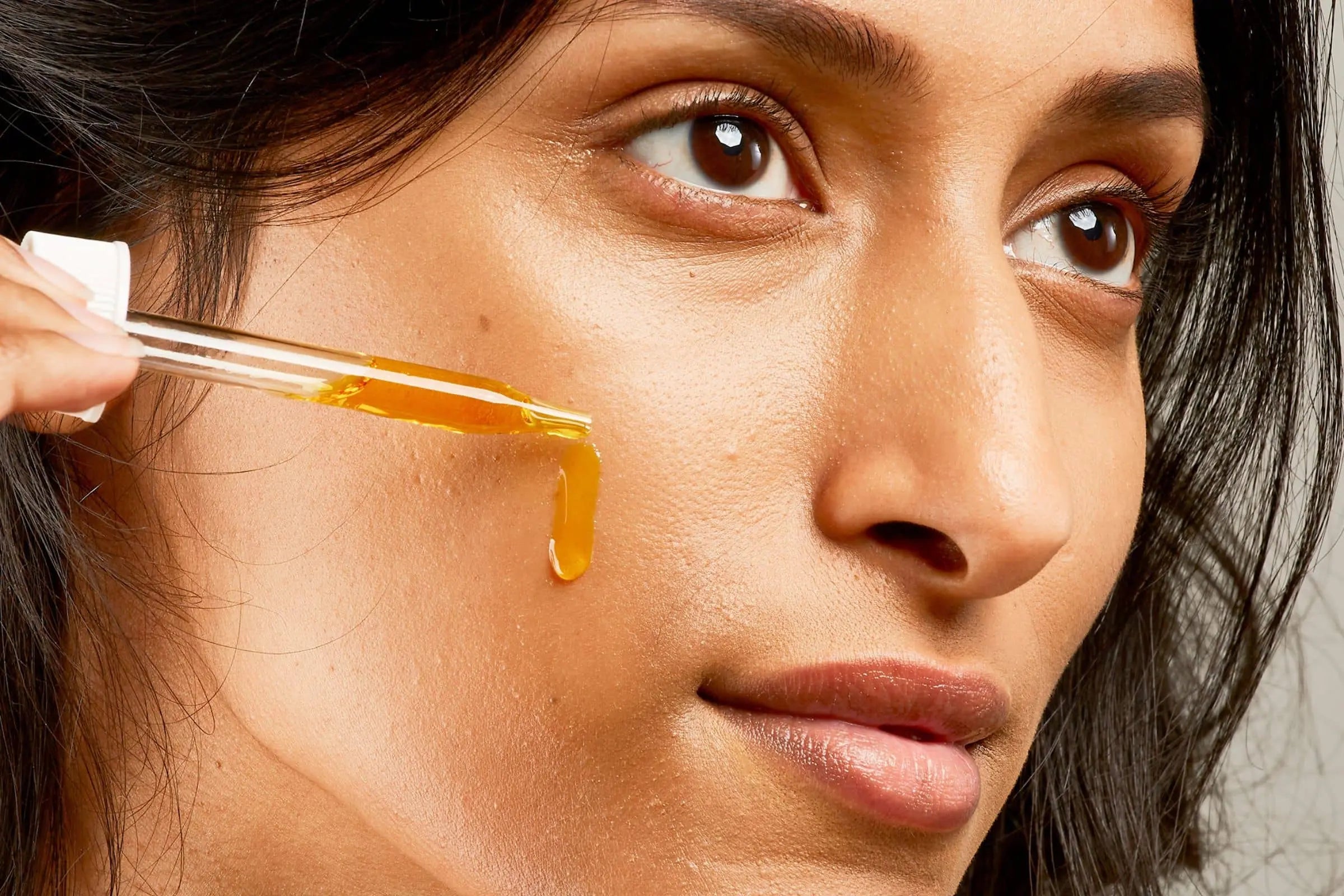
100% PURE Products for Gua Sha Enhancement
What perfect gua ritual wouldn’t be complete without skincare products that can transform your complexion and enhance the effectiveness of your gua sha routine? That’s why we paired the best 100% PURE natural skincare products for the best comprehensive skin care.
Here are our key products to enhance your daily skincare routine that are designed to enhance skin health, radiance, and the powers of gua sha!
Watermelon Cucumber Water Locking Mist
Our ultra-hydrating water mist preps skin for gua sha and naturally hydrates and soothes your complexion. Featuring olive squalene, which can help repair dry, rough skin by moisturizing and softening it while also soothing redness or irritation caused by sensitive skin. This ultra-hydrating mist also refreshes and calms skin during treatment. It reinvigorates dehydrated skin cells and reduces signs of aging by locking in cactus juice, watermelon hydrosol, and hyaluronic acid for a trifecta of the ultimate in hydration!
Retinol Restorative Neck Cream
For enhanced neck sculpting, pair this age-corrective neck cream with your gua sha treatment. It’s concentrated with hydrolyzed quinoa to promote elasticity for a firmer, more lifted neck, while retinol works to reduce the appearance of lines and wrinkles. With skin-brightening niacinamide and hydration superstars, olive squalane, and hyaluronic acid, these active ingredients all create a synergistic effect for the perfect massage and gua sha experience!
Green Tea EGCG Concentrate Cream
This antioxidant-rich cream provides the perfect base to glide your gua sha tool effortlessly across your skin. It harnesses the power of green tea's EGCG to boost circulation, soothe inflammation, and unclog pores, while yerba mate water and rich açai butter deeply moisturize and promote healthier skin.
Multi-Vitamin + Antioxidants Potent PM Serum
This nutrient-packed super serum is a major player in nourishing your skin after gua sha sessions. Retinol helps to promote cellular turnover and sloughs away dead skin, helping to lift stubborn blockages and debris from deep within pores. The potent, stabilized vitamins in this PM serum work synergistically to reduce the appearance of lines and wrinkles, while maximizing your skin’s overnight repair after gua sha.
Intensive Nourishing Facial Oil
We like to think of this facial oil as a superhero for the skin. Featuring a beautiful blend of lightweight grapeseed oil, antioxidant vitamin E, and calming florals and herbs, this natural facial oil also boosts all-star anti-aging properties to complement gua sha. Calming and balancing lavender and rosemary provide the skin with a neutral but hydrated finish and improved oil balance over time. This nourishing oil truly feeds the skin plus supports overnight skin renewal through gentle massage
Frequency and Timing of Gua Sha Treatments
Starting your day with a gua sha can set a positive tone for the day ahead. The increased circulation and reduced puffiness can help you look more awake and refreshed. It’s also great to gua sha before bedtime while your skin can heal and repair itself overnight – or as a mid-week pick me up. You might decide to gua sha daily – it really depends on a few factors!
Decide daily versus weekly frequency of gua sha treatments depending on your skin type and tolerance or the way your skin behaves. For sensitive skin types and newbies at face sculpting, start once a week and gradually increase the frequency – if your skin is tolerating it well - until you see the best results. If your skin is non-reactive or you have a few scrap sessions under your spa headband, you can try to gua sha daily to achieve the best results. You can also consider your skin's needs, and reduce frequency or adjust pressure if you experience irritation.
Adding gua sha into your morning or evening skincare routines is an easy way to make it a consistent practice and see results! A morning gua sha routine can also serve as a mindful moment before diving into the day’s activities. Pair it with your morning coffee or nighttime sleepy tea for an added layer of enjoyment. By making it a regular part of your daily routines, you’ll likely find that you look forward to this peaceful practice each day.
If you’re able to and your skin is tolerating gua sha well, you might even opt to customize techniques for morning and night routines. A morning gua sha routine can help treat puffiness and energize the skin, whereas a night routine will help relax the muscles and release tight connective tissue in the face. Remember that the key to getting the desired results is consistently doing the gua sha facial massage.
Aim to incorporate it into your routine a few times a week, if not daily. Patience is also important, as the benefits of gua sha, like improved skin tone and reduced puffiness, can take time to become noticeable. Keep in mind that gua sha is not just a quick fix but a long-term investment in your skin’s health and overall radiance. By staying consistent, you’ll start to see and feel the benefits over a short time!
Common Mistakes and How to Avoid Them
As with learning most new things, it can take a bit of patience and practice. The learning curb with gua sha techniques is no different, so it’s fairly common to make some errors. Let’s delve into some common mistakes of gia sha and how to avoid them.
Using the wrong oil:
You need a facial oil to create a slip-and-slide motion and nourish your skin. Avoid sticky oils and use light and non-sticky formulas in each step of your routine. Even one sticky formula in your lineup can lead to friction and dragging during your gua sha step.
Holding the tool incorrectly:
You should hold the gua sha stone at an acute angle (15–45°) to the skin's surface to maximize contact and correctly provide lymphatic drainage. Holding it incorrectly can cause you to tug and pull at your skin – plus you won’t be getting many benefits of gua sha.
Applying too much pressure:
You want to find the right balance for gua for your skin. You should use light to medium pressure and gentle strokes. Signs of applying too much pressure can cause redness and irritation or permanent damage to your skin, such as broken vessels.
Using the wrong motion:
It’s important to learn and maintain proper stroke direction for gua sha. On the face, pull the tool upwards and outwards, not downwards. Downward motions on the neck could result in sagging. On the neck, start with downward strokes on each side, then finish after 3–4 strokes. You should move slowly and steadily.
Skipping the neck:
The neck is an important part of facial massage. Gua sha helps move lymphatic fluid, which can reduce swelling in the neck and chest. This also supports the body's natural detoxification process. You should wash your gua sha tool after each use.
Conclusion
If you’re on a quest for youthful, glowing skin, we can safely say gua sha has been on a centuries-old quest from its multi-faceted uses in traditional medicine to modern beauty routines – and now yours! Gua sha helps to promote circulation, facilitating the delivery of oxygen and nutrients to the small blood vessels that may not normally have great blood flow. This increased circulation not only helps in healing but also promotes detoxification and overall vitality.
After consistent practice, facial gua sha can wield benefits like tighter, brighter, firmer, and smoother skin. Plus, according to traditional Chinese medicine, gua sha creates healthy energy. We encourage you to embrace this ancient practice and incorporate it into your beauty routine. Gua sha will leave you feeling good — both inside and out – and will definitely give you modern skincare results.
Frequently Asked Questions
How often should I clean my gua sha tool?
You should clean your gua sha tool after each use to prevent bacteria buildup and skin irritation. The longer you wait to clean it, the more likely it is for an adhesive film to build up from facial oils and other products. This residue can be absorbed into the tool and cause skin problems like acne, breakouts, and greasiness.
Can gua sha help with sinus congestion and headaches?
Since gua sha can stimulate the lymphatic system and improve blood flow, this can help relieve sinus congestion and allergy symptoms by removing waste and fluid from the body, and by delivering oxygen and nutrients to the sinuses. Gua sha can also help with headaches by releasing chemicals that reduce pain and promote healing.
Is it normal to see redness after a gua sha session?
Yes, redness is a common side effect of gua sha. The redness is similar to what happens after a sprint and is often seen in areas where more pressure is applied. The redness usually fades within a few days but may last longer after the first treatment. Be sure to use light to medium pressure and gentle strokes.
Can I perform gua sha on active acne or inflamed skin?
It’s best to avoid performing gua sha on active acne or inflamed skin until your skin is clear. You don’t want to move bacteria around on your face. However, if you have an active breakout, you can try gua sha on your neck and chest to increase circulation and reduce inflammation.
How long should a typical gua sha session last?
A typical gua sha session should be between 3–5 minutes each time to maximize benefits like improved circulation and reduced tension.
- Tags: August-2024, Skin Care, skincare
We carefully hand-select products based on strict purity standards, and only recommend products we feel meet this criteria. 100% PURE™ may earn a small commission for products purchased through affiliate links.
The information in this article is for educational use, and not intended to substitute professional medical advice, diagnosis, or treatment and should not be used as such.












